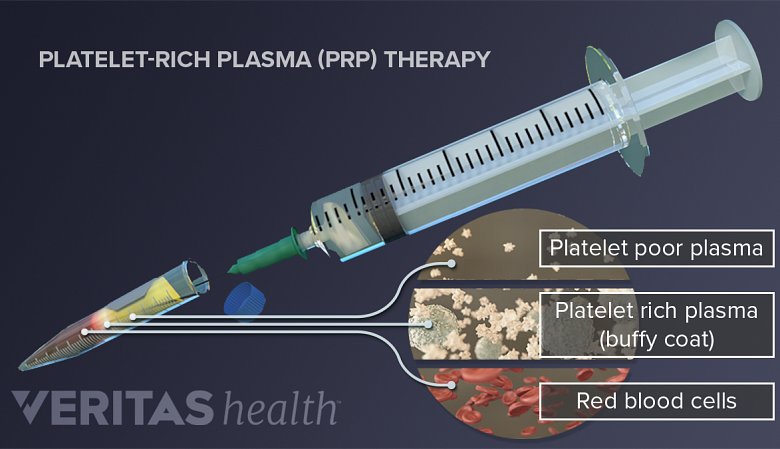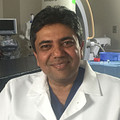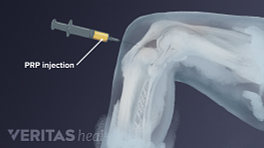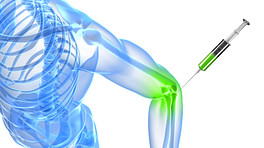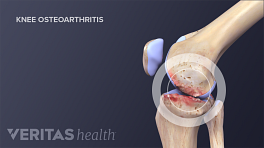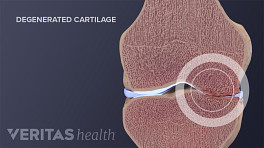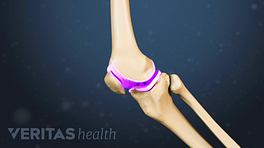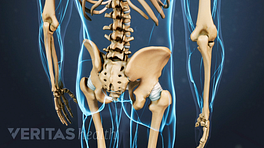People considering stem cell treatment for arthritis want to know Is it safe? and Is it effective?
Many physicians believe stem cell injections can be made more effective by using them in combination with platelet rich plasma.
In This Article:
- Stem Cell Therapy for Arthritis
- Is Stem Cell Therapy for Arthritis Safe and Effective?
Stem Cell Therapy Safety
Most stem cell therapy using adult stem cells is considered safe because the stem cells are collected from the patient, minimizing the risk of an unwanted reaction. The most common side effects are temporary swelling and pain. 1 Chahla J, Dean CS, Moatshe G, Pascual-garrido C, Serra cruz R, Laprade RF. Concentrated Bone Marrow Aspirate for the Treatment of Chondral Injuries and Osteoarthritis of the Knee: A Systematic Review of Outcomes. Orthop J Sports Med. 2016;4(1):2325967115625481.
While most stem cell therapy for arthritis is considered safe, it does carry the same risks as any other medical procedure, such as a small risk of infection. Risk may be increased if:
- A different type of stem cell is used (e.g. pluripotent stem cells instead of adult stem cells)
- The stem cells are cultured (taken from the patient and grown in the lab over time)
- The stem cells are mixed with other chemicals
Some research suggests stem cell therapy engaging in these kinds of practices may elevate the risk of tumors. 2 Herberts CA, Kwa MS, Hermsen HP. Risk factors in the development of stem cell therapy. J Transl Med. 2011;9:29.
As with most regenerative medicine treatments, research is ongoing, and FDA regulations are relatively new and subject to change.
Stem Cell Therapy Effectiveness
Whether or not stem cells therapy is effective in treating osteoarthritis is a controversial subject among medical professionals, and research in the area is ongoing.
How researchers think stem cell therapy works
Researchers theorize
3
Burke J, Hunter M, Kolhe R, Isales C, Hamrick M, Fulzele S. Therapeutic potential of mesenchymal stem cell based therapy for osteoarthritis. Clin Transl Med. 2016;5(1):27.
that when applied to an arthritic joint, stem cells might:
- Develop into needed cartilage cells
- Suppress inflammation that can make arthritis worse
- Release proteins (cytokines) that slow down cartilage degeneration and/or decrease pain
See Osteoarthritis Symptoms and Signs
It may be none, one, two, or all three processes at are work.
Proponents vs critics
Like many relatively new treatments, stem cell therapy has proponents and critics.
- Proponents of stem cell therapy point to clinical studies that have shown generally positive results. 1 Chahla J, Dean CS, Moatshe G, Pascual-garrido C, Serra cruz R, Laprade RF. Concentrated Bone Marrow Aspirate for the Treatment of Chondral Injuries and Osteoarthritis of the Knee: A Systematic Review of Outcomes. Orthop J Sports Med. 2016;4(1):2325967115625481. , 3 Burke J, Hunter M, Kolhe R, Isales C, Hamrick M, Fulzele S. Therapeutic potential of mesenchymal stem cell based therapy for osteoarthritis. Clin Transl Med. 2016;5(1):27. , 4 Filardo G, Perdisa F, Roffi A, Marcacci M, Kon E. Stem cells in articular cartilage regeneration. J Orthop Surg Res. 2016;11:42. , 5 Freitag J, Bates D, Boyd R, et al. Mesenchymal stem cell therapy in the treatment of osteoarthritis: reparative pathways, safety and efficacy - a review. BMC Musculoskelet Disord. 2016;17:230.
- Critics do not believe stem cell therapy works any better than a placebo.
Critics emphasize that there have been no large-scale, prospective, double-blind research studies—the kind of clinical studies that medical professionals consider the gold standard—to support stem cell therapy for arthritis.
Factors that affect stem cell therapy research
Another challenge associated with current stem cell research is that there is no standard stem cell therapy for arthritis treatment. So the stem cell therapy in one study is not necessarily the same as the stem cell therapy in another study.
Differences can include:
- Where the stem cells are harvested from
- How stem cells are separated from the rest of the harvested tissue
- How the stem cells are delivered to the arthritic joint
These differences are further complicated by more unknowns. For example, how many stem cells are needed for a particular treatment? And how do we determine if a patient’s own stem cells are competent enough to aid in healing?
Stem Cells and PRP
Many physicians combine the use of stem cells with platelet rich plasma, or PRP.
See Platelet-Rich Plasma (PRP) Therapy for Arthritis
PRP is derived from a sample of the patient’s blood. In the body, platelets secrete substances called growth factors and other proteins that regulate cell division, stimulate tissue regeneration, and promote healing. Like stem cell therapy, PRP therapy is sometimes used alone with the hopes of healing an arthritic joint.
See PRP Injection Preparation and Composition
Physicians who use PRP and stem cells together think that the PRP can help maximize the healing effects of stem cells. 6 Teng C, Zhou C, Xu D, Bi F. Combination of platelet-rich plasma and bone marrow mesenchymal stem cells enhances tendon-bone healing in a rabbit model of anterior cruciate ligament reconstruction. J Orthop Surg Res. 2016;11(1):96. , 7 Wang C, Iversen MD, Mcalindon T, et al. Assessing the comparative effectiveness of Tai Chi versus physical therapy for knee osteoarthritis: design and rationale for a randomized trial. BMC Complement Altern Med. 2014;14:333. Research in this area is ongoing.
See Platelet-Rich Plasma Injection Procedure
Deciding to Have Stem Cell Therapy for Arthritis
Stem cell therapy can vary depending on the doctor performing it. People considering stem cell therapy for an arthritic knee or other joint are advised to ask their doctors questions, including:
- What is your experience with this treatment?
- If using a stem cell injection, will medical imaging be used to ensure accuracy?
- How will my stem cells be harvested?
- How do people with similar joint damage to me respond to treatment?
- What are the potential risks and complications?
Both doctors and patients can benefit from having a frank conversation and setting reasonable expectations.
- 1 Chahla J, Dean CS, Moatshe G, Pascual-garrido C, Serra cruz R, Laprade RF. Concentrated Bone Marrow Aspirate for the Treatment of Chondral Injuries and Osteoarthritis of the Knee: A Systematic Review of Outcomes. Orthop J Sports Med. 2016;4(1):2325967115625481.
- 2 Herberts CA, Kwa MS, Hermsen HP. Risk factors in the development of stem cell therapy. J Transl Med. 2011;9:29.
- 3 Burke J, Hunter M, Kolhe R, Isales C, Hamrick M, Fulzele S. Therapeutic potential of mesenchymal stem cell based therapy for osteoarthritis. Clin Transl Med. 2016;5(1):27.
- 4 Filardo G, Perdisa F, Roffi A, Marcacci M, Kon E. Stem cells in articular cartilage regeneration. J Orthop Surg Res. 2016;11:42.
- 5 Freitag J, Bates D, Boyd R, et al. Mesenchymal stem cell therapy in the treatment of osteoarthritis: reparative pathways, safety and efficacy - a review. BMC Musculoskelet Disord. 2016;17:230.
- 6 Teng C, Zhou C, Xu D, Bi F. Combination of platelet-rich plasma and bone marrow mesenchymal stem cells enhances tendon-bone healing in a rabbit model of anterior cruciate ligament reconstruction. J Orthop Surg Res. 2016;11(1):96.
- 7 Wang C, Iversen MD, Mcalindon T, et al. Assessing the comparative effectiveness of Tai Chi versus physical therapy for knee osteoarthritis: design and rationale for a randomized trial. BMC Complement Altern Med. 2014;14:333.
